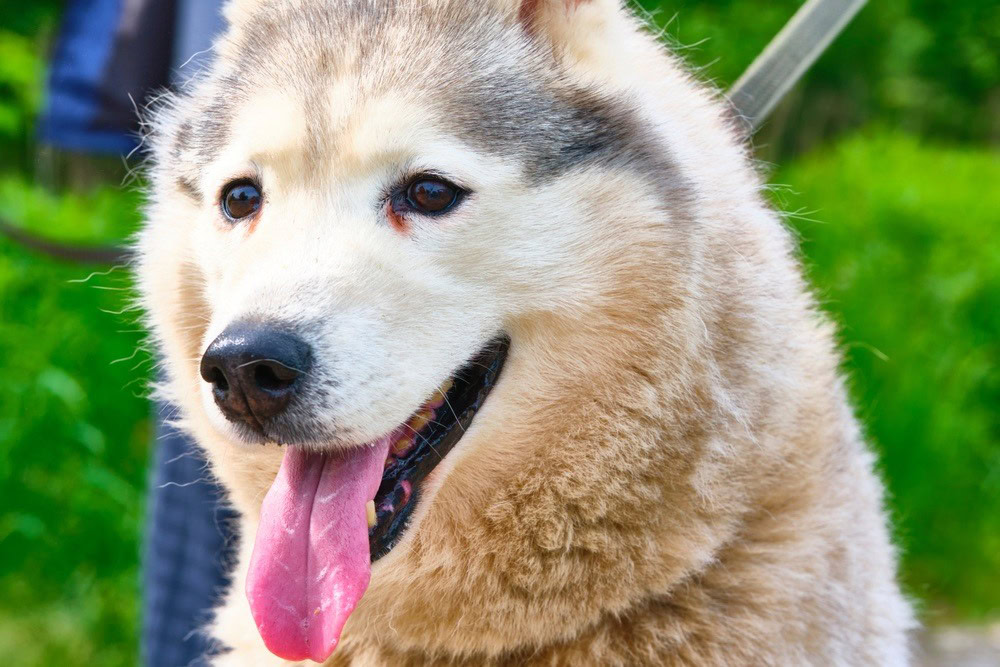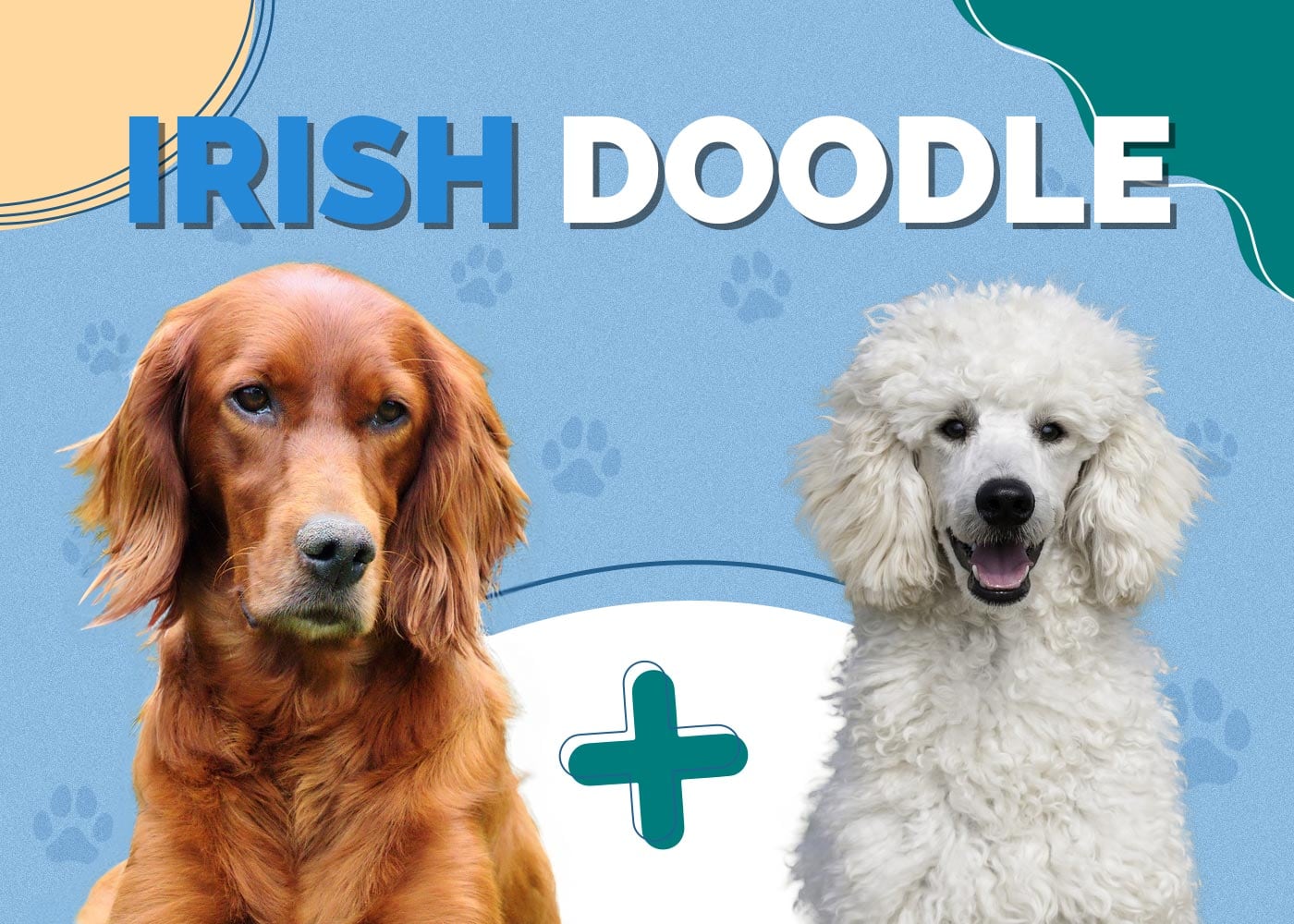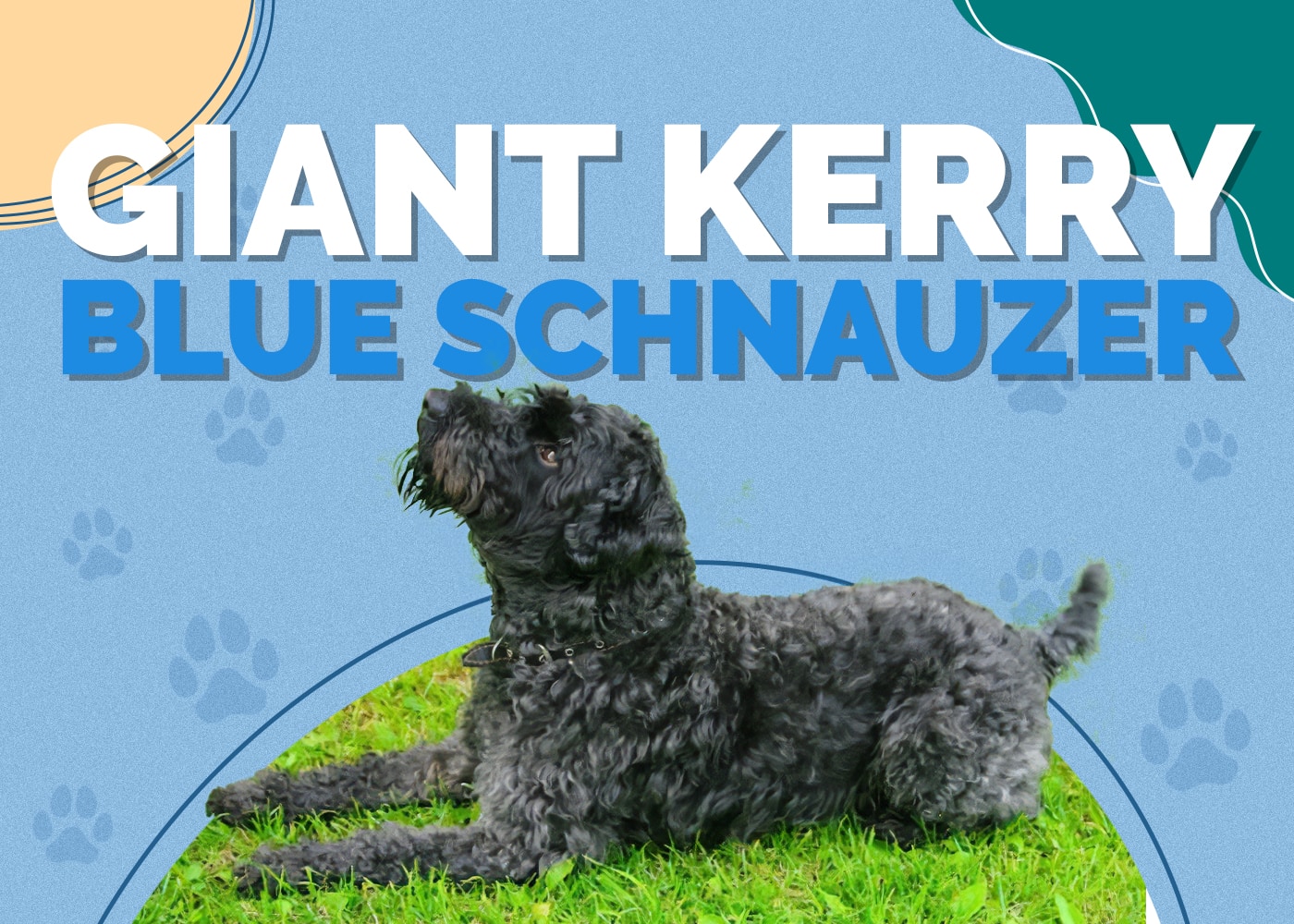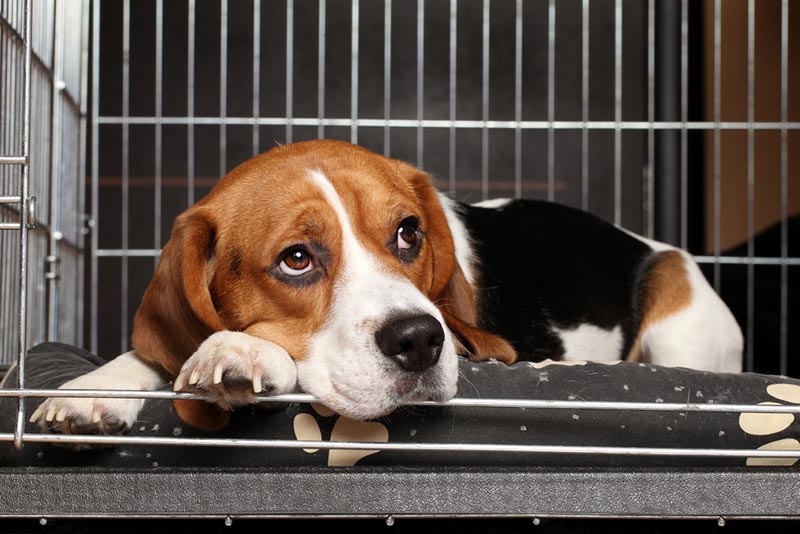American Bulldog vs Boxer: What’s the Difference?

Updated on
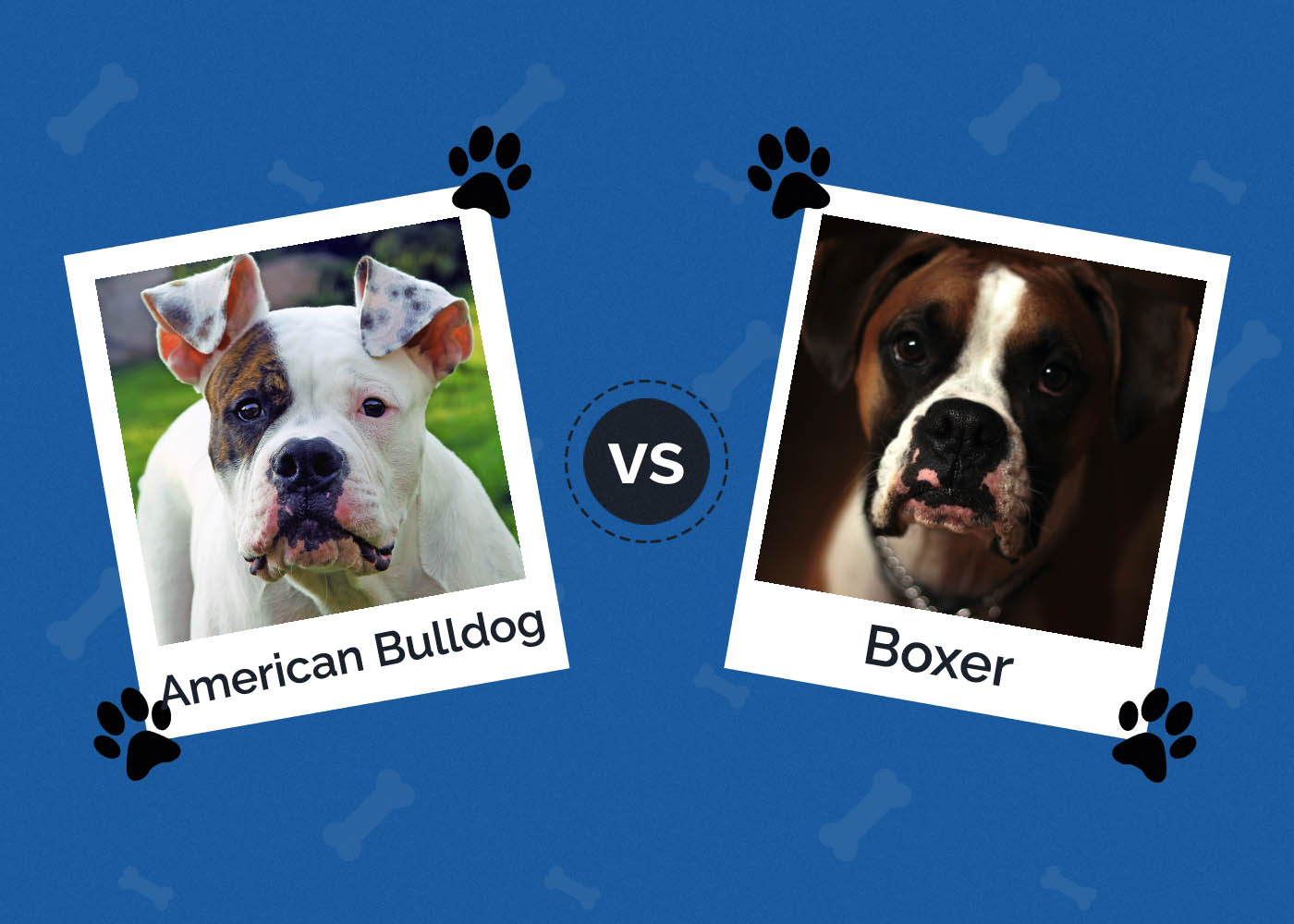
The American Bulldog and the Boxer are popular breeds for a very good reason, especially if you want a dog who loves children. Although they have several similarities, their differences may convince you to select one breed over the other. This guide showcases the American Bulldog and the Boxer to help you distinguish between them and get to know each breed better.
Visual Differences
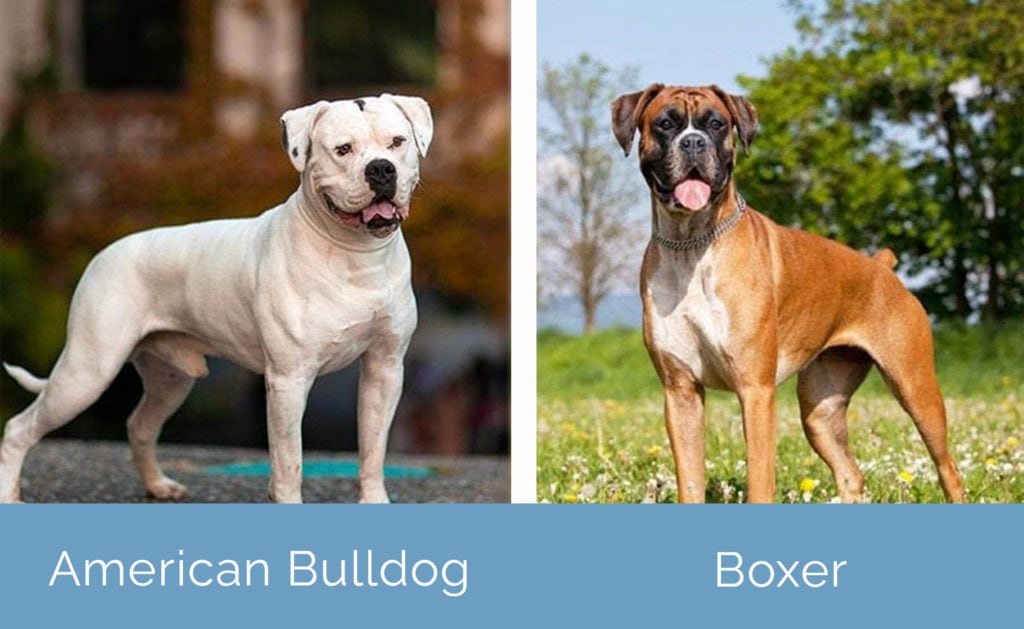
A Quick Glance
- Average Height (adult): 20–23 inches
- Average Weight (adult): 75–100 pounds
- Lifespan: 8–15 years
- Exercise: Minimum 1 hour daily
- Grooming needs: Moderate
- Family-friendly: Often
- Dog-friendly: Sometimes
- Trainability: Medium-ease
- Average Height (adult): 21.5–25 inches
- Average Weight (adult): 55–80 pounds
- Lifespan: 10–12 years
- Exercise: High needs
- Grooming needs: Moderate
- Family-friendly: Yes
- Dog-friendly: Often
- Trainability: Good
American Bulldog

History
The American Bulldog is a descendant of the English Bulldog. The English Bulldog was used for blood sports until the late 1800s, and in the United States, they used them as working and catch-dogs.
After World War II, the American Bulldog faced extinction, so Bulldog lovers in the U.S. brought the dogs back and created the American Bulldog. The American Bulldog was recognized by the American Kennel Club in 1999.
Physical Characteristics
Physically, American Bulldogs are well-balanced with an athletic, powerful body. They have a large head with a wide muzzle and ears that are small to medium-large. Solid white bodies with colored patches and brindle are the norm, but you may see different body colors that are undesirable for the breed. Their bodies are longer than they are tall, and their tail can be docked or natural.
A healthy male adult will weigh 75–100 pounds and stand 22–23 inches tall at the shoulder, while a healthy female will weigh 60–80 pounds and be 20–23 inches tall.
Personality
The American Bulldog is a gentle breed that loves children and will remain an affectionate and loyal lifelong companion. They have strong protective instincts and can be reserved with strangers. Since they are alert and confident, they make excellent watchdogs. They are not hostile by any means but will benefit from early socialization.
They don’t always take kindly to other animals but can learn to tolerate another family pet with time and exposure. Training from a young age with a confident owner will ensure they learn to behave and follow commands since they can be strong-willed.
Grooming
The American Bulldog’s fur is short and coarse, and they are light to moderate shedders because they don’t have a thick undercoat. Brushing regularly with an occasional bath will keep shedding to a minimum. Keep in mind that they are a breed known to drool and slobber.
Diet & Nutrition
Since they are an active and muscular breed, American Bulldogs need plenty of protein and omega fatty acids. Males will need at least 2,100 calories, and females require 1,800 calories daily. They can overeat if allowed unlimited access to food, so it is not recommended to free-feed them. Plenty of fresh water needs to be available at all times.
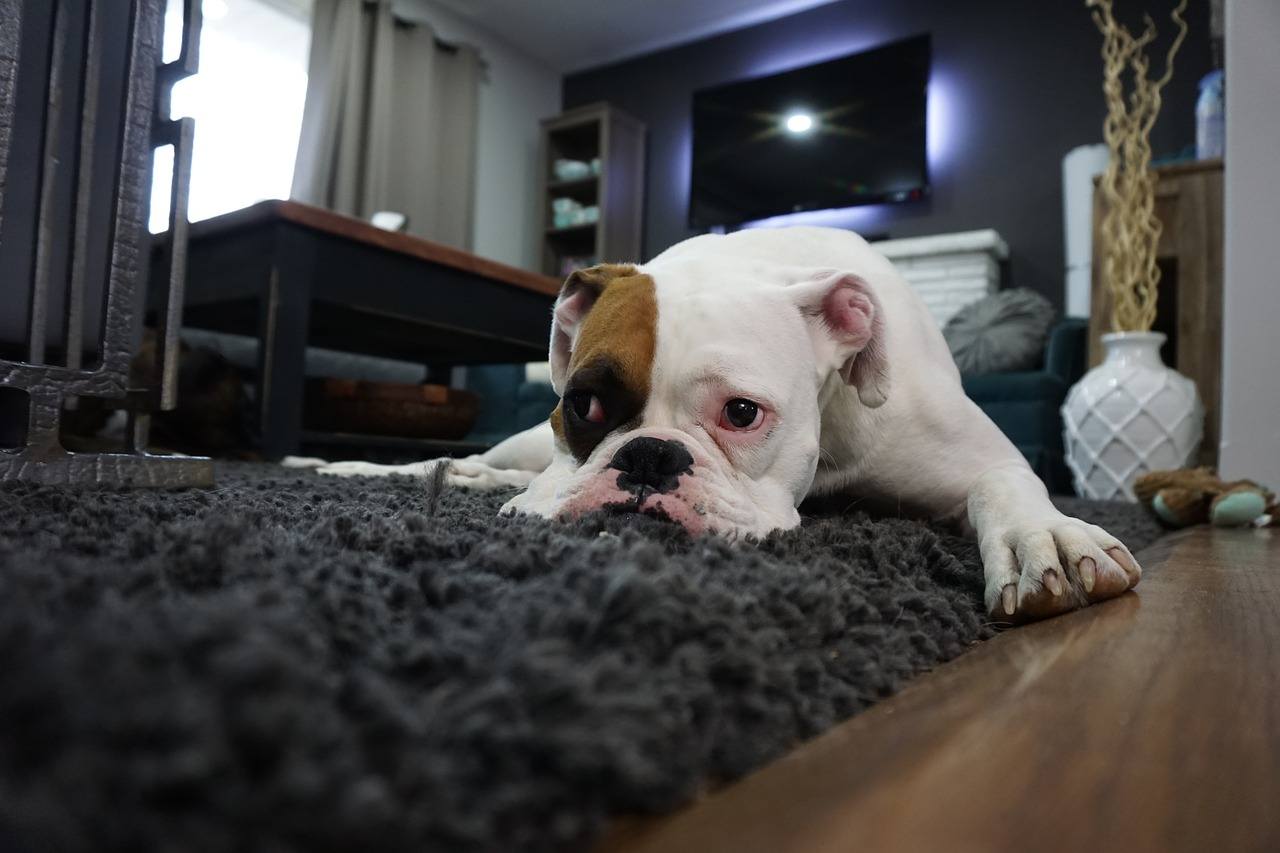
Common Health Concerns
The average lifespan for the American Bulldog is 8 to 15 years. Common ailments include nervous system disorders, kidney and thyroid issues, dysplasia, bone cancer, cherry eye, and ACL tears. Some can be prone to allergies, heart defects, and hypothyroidism.
Exercise Requirements
They are intelligent yet very energetic, so they must remain active to prevent anxiety and boredom. American Bulldogs make great running and hiking companions and love to swim, go for walks, and play fetch. They enjoy relaxation time with their family and will be mellow indoors if they’ve received plenty of physical and mental activity.
- Gentle and affectionate
- Intelligent
- Loyal
- Love children
- Athletic
- Minimal grooming needs
- Energetic
- Alert and confident
- Reserved with strangers
- May not get along with other animals
- Drooling and slobbering are common
- Will overeat if given the chance
- Strong-willed
Boxer
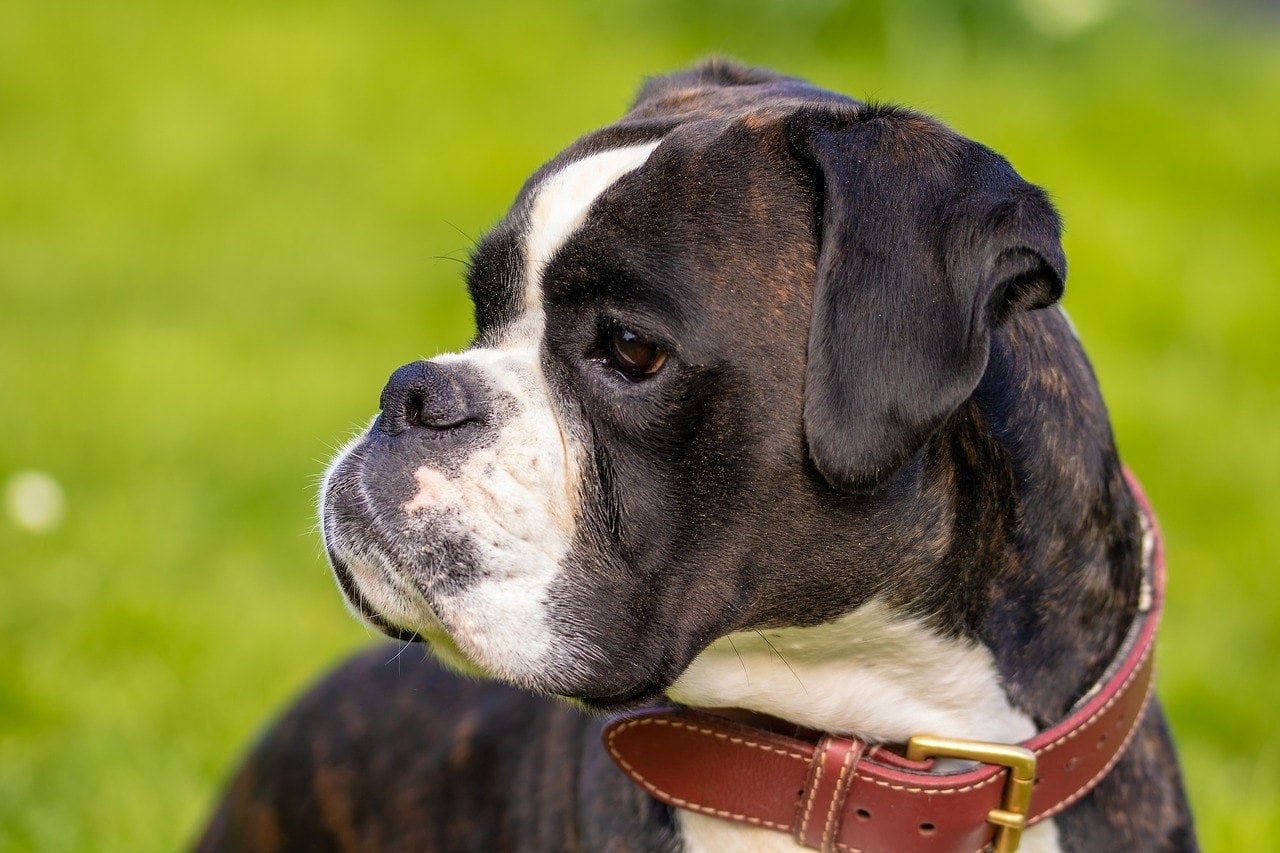
History
The Boxer is descended from the now-extinct Bullenbeisser and was developed in Germany in the late 19th century. In 1904, the first Boxer breed standard was published and has remained generally the same since then. The AKC also registered its first Boxer in 1904, and during World War I, the Boxer assisted with military work. During World War II, the Boxer became popular around the world.
Physical Characteristics
Boxers are short-haired with a smooth fawn or brindle coat and white underbelly and feet. They can have white markings on their neck or face and ears that hang down if they aren’t cropped. You may see docked tails, but many owners keep their tails long. They have square heads with a broad, deep chest and a short back.
Male boxers weigh 65 to 80 pounds, and females weigh 15 pounds less. Males can reach 23 to 25 inches at the shoulder, and females are 21.5 to 23.5 inches tall.
Personality
Like the American Bulldog, Boxers are energetic and intelligent. They are fiercely loyal and make excellent watchdogs because they want to protect their families. They are reserved with strangers, but once they get to know them, they are friendly.
Barking incessantly is not in their nature, so you know that if they bark, it is for a good reason. Many make noises in their throat as a form of communication or excitement.
A Boxer will do the best with other people and animals if socialized from a young age, and you will find that they are patient yet playful and almost clown-like at times. As long as you don’t mind a little drool and slobbery kisses occasionally, the Boxer will be content to lie on your lap.
Patient and consistent training is essential for the Boxer to learn to control their actions. Positive motivation that includes plenty of praise and rewards will keep their attention on the training at hand.
Grooming
They are high shedders once per year in the spring; otherwise, it will be moderate. It is best to groom and brush them regularly to reduce the amount of hair shed each day and to keep their coat healthy and shiny.
Diet and Nutrition
Since they are a high-energy breed, a diet of high-quality protein with plenty of vitamins and minerals will help with endurance and longevity. Plenty of calories per day will be needed, but they can become overweight with constant access to food.
Daily calories required can range from 40 to 50 calories per pound, depending on their age and how active they are.

Common Health Concerns
Boxers are susceptible to brain tumors, lymphoma, and mast cell tumors. Heart defects such as aortic stenosis and cardiomyopathy could also be an issue. As with many other breeds, hip dysplasia, allergies, deafness (usually in white boxers), and hypothyroidism are something to be aware of. Their life expectancy is 10 to 12 years.
Exercise Requirements
Boxers don’t have a high tolerance to temperature extremes. Their short nose doesn’t cool hot air well, and their coat doesn’t keep them warm in the winter. They require a great deal of exercise; otherwise, they can become bored and destructive.
As long as they can run and play with their owners, they will thrive with the companionship and exercise it provides.
- High energy
- Intelligent
- Loyal and protective
- Patient
- Playful and clown-like
- Minimal shedding except in the spring
- Respond to positive reinforcement
- Cannot tolerate extreme temperatures
- Need high amounts of exercise
- Drooling and slobbering common
- Can be food-motivated
Conclusion
American Bulldogs and Boxers share a few similarities, especially with their personalities. However, they have many attributes that make them unique. When you have been around one of these dogs, you will realize how loving they can be once a bond is formed. As with any dog, the more training provided, the better your dog will behave. Recognizing the differences between the breeds will help you appreciate what each one has to offer.
See also:
- Miniature English Bulldog vs English Bulldog: What’s the Difference?
- 12 Dogs That Are Similar to Pitbulls (With Pictures)
Featured Image Credit: (L) Little Moon, Shutterstock | (R) Jordan Davis, Unsplash



